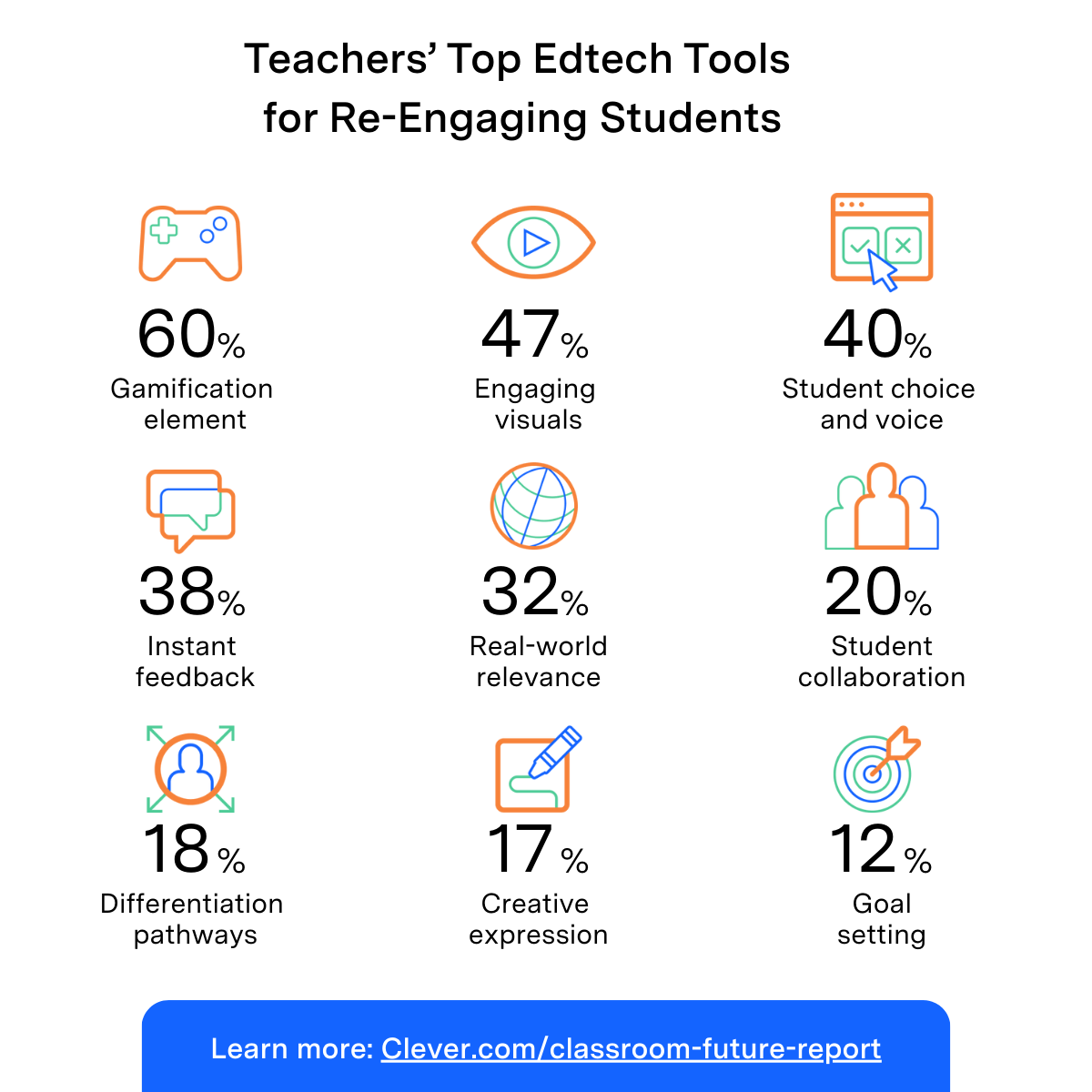As educators, administrators, and students have returned to schools for a new academic year, they have also returned to an evolved EdTech landscape, with AI presenting new questions and opportunities. However, as Clever’s latest Classroom of the Future Report shows, technology itself is only one piece of the puzzle in creating effective, inclusive, and secure digital learning experiences. The most important factor, reinforced by the annual report, is how teachers engage with the technology, and how they use it to engage with their students. When educators are on board, confident, and empowered to use the digital tools that fit their needs, that’s when EdTech can truly help transform teaching and learning.
Clever’s Classroom of the Future Report 2025 is based on a survey of more than 2,500 educators throughout the U.S., from elementary to high school settings. In this survey, teachers offered insights into how they use technology in their classrooms, what kinds of strategies work best, and how their schools decide which EdTech tools to provide:
Gamification, choice, and personalization are most impactful student engagement strategies
Engaging students in the classroom continues to be one of the biggest challenges for teachers at all levels, and it is one of the reasons teachers turn to EdTech for solutions. As EdTech evolves to offer greater functionality, teachers are using digital tools in a variety of ways to re-ignite engagement in learning among students. Gamification stands out as the most effective student engagement strategy, according to 60% of teachers, followed by engaging visuals at 47%, student choice and voice at 40%, and instant feedback at 38%.
Educators also say that EdTech can ignite engagement by empowering student choice and voice and personalizing the learning experience. Here, teachers reaffirm that engagement is not one-size-fits-all, but calls for adaptability to align with students’ needs and goals. Instant feedback is also highlighted as a key feature for engagement, underscoring the importance of enabling students to quickly identify areas for improvement and build on their strengths.

EdTech succeeds when teachers are all-in
Educators bring technology to life in the classroom, so before EdTech can engage students, it must first engage teachers. This report reveals that the strongest predictor of EdTech’s impact is educators’ attitudes toward it, with “Super Users” and “Early Adopters” seeing 50-60% higher rates of success in student engagement compared to EdTech Avoiders. When teachers are motivated to get the most out of their digital learning tools, they are more likely to use them effectively to improve student outcomes, save time, and more.
Educators call for support to approach AI with confidence
As AI technologies create new ways to assist with teaching and learning, many educators recognize the potential benefits of AI but may not yet feel well-equipped to use it. Only 27% of teachers now feel very confident about using AI tools. However, teachers do support students using AI in a variety of ways, including personalized tutoring, language learning, and creating learning materials such as flashcards.
EdTech continues to flourish with innovation and exciting new capabilities, but it’s clear that what drives EdTech’s real educational impact in schools is how teachers use it. School leaders should consider if educators have access to the right tools for their needs, as well as the knowledge of how to use them effectively.
Empowering teachers to transform learning in their classrooms
At Kahoot!, we’re proud to be one of the most widely-used digital solutions in U.S. K-12 schools, and used by more than 8 million teachers and hundreds of millions of students worldwide to boost engagement and learning outcomes. Teachers can easily spark students’ engagement through game-based learning with Kahoot!’s playful approach, while our flexible features—such as our AI creation tools—enable teachers and students to create personalized learning experiences in seconds. Teachers can also foster student-centered learning with Kahoot! that gives students multiple ways to engage and use their voice, including different game modes, open-ended question types, and even encouraging students to create their own kahoots.
For more insights into the top trends in EdTech, download Clever’s Classroom of the Future Report 2025 today.




